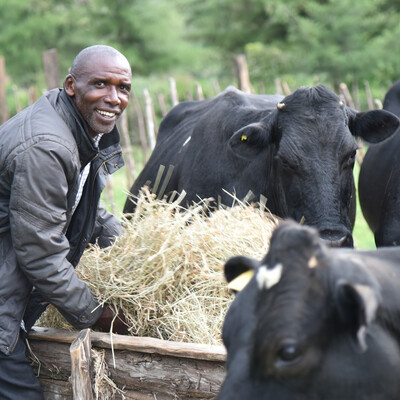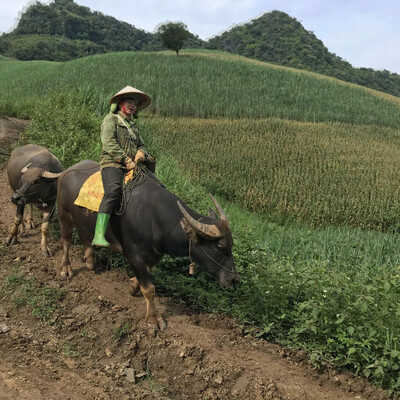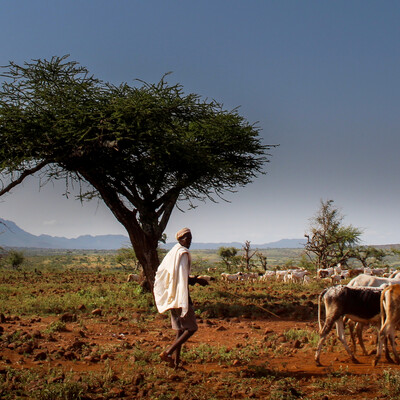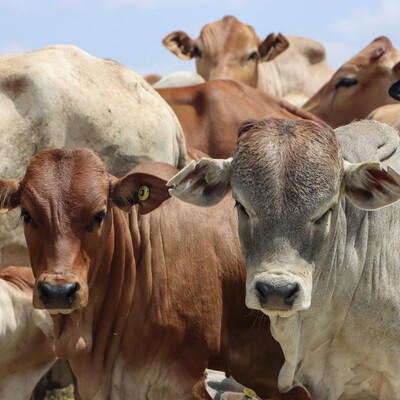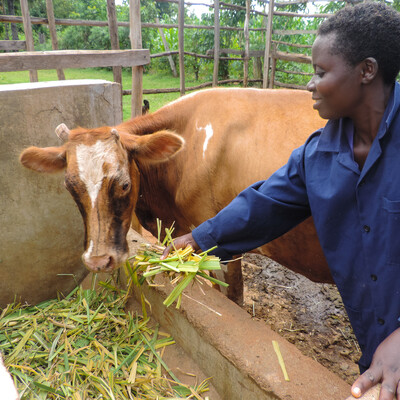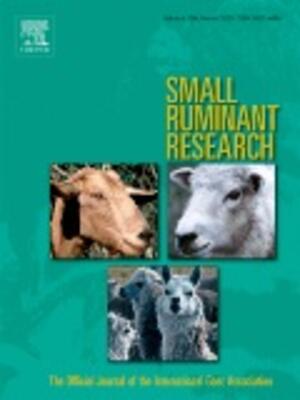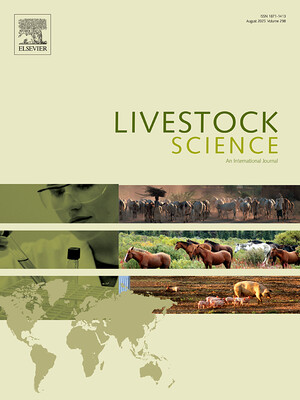
A field visit to support climate-smart sustainable agro-pastoralism in East Africa
On 1 Sep 2021, scientists Sonja Leitner and Claudia Arndt from the Mazingira Centre of the International Livestock Research Institute (ILRI) in Nairobi, Kenya, hosted a group of international researchers on ILRI’s Kapiti Research Station in Machakos County. They were supported in the field by farm manager Nehemiah Kimengich and field technician Nelson Kipchirchir from Kapiti as well as remotely by Ilona Gluecks, head of ILRI’s clinical research facilities. The group of researchers that visited Kapiti is part of the ESSA project (Earth observation and environmental sensing for climate-smart sustainable agro-pastoralism ecosystem transformation in East Africa) that investigates pastoral systems of different degradation status to improve our understanding of ecosystem processes, water cycling, pastoralism, and livelihood diversification. The outcome of the project is expected to support a climate-smart agropastoral ecosystem transformation in East Africa to ensure ecosystem health as well as improve people’s livelihoods and food security.
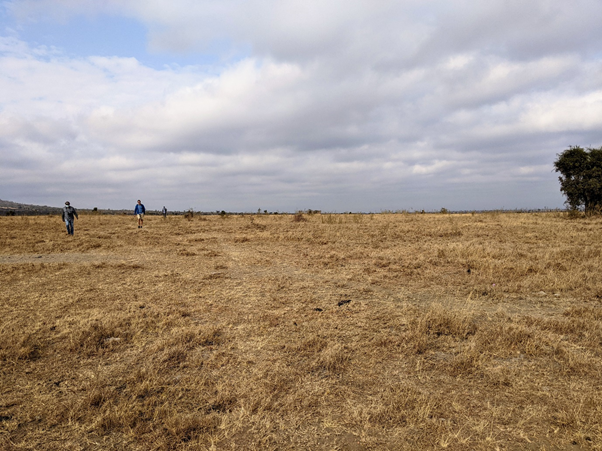 The study site, a typical savanna grassland, at the end of the dry season. Photo credit: ILRI/Sonja Leitner.
The study site, a typical savanna grassland, at the end of the dry season. Photo credit: ILRI/Sonja Leitner.
One goal of the project is to better understand the ecology and biogeochemistry of rangelands while also providing management and diversification options to pastoralists, such as beekeeping and the sale of baobab tree products, to improve their livelihoods and climate change resilience. In Kapiti, the team investigates the effect of grazing on the ecosystem carbon and water balance to monitor if the savanna grassland is a carbon source or sink, as well as the ecosystem hydrology. The study will also use flight campaigns (using airplanes equipped with optical sensors) to map and monitor plant biomass production across the dry and wet seasons. Further, it will map water pans, livestock enclosures (bomas) and evaluate methodologies for wildlife counting. Similar information will be collected at two other locations, in Taita Taveta (southern Kenya) and Yebelo (southern Ethiopia). Results will then be linked to remote sensing data from satellites to enable the researchers to extrapolate their findings to similar ecosystems across East Africa. This will help to assess the carbon cycling and water balance of grasslands with different intensities of livestock and wildlife grazing.
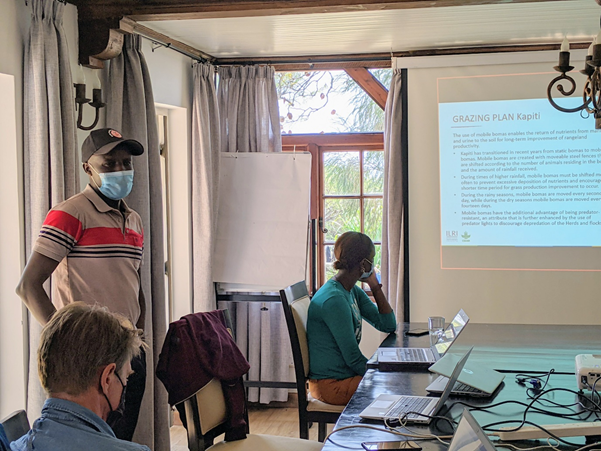 Nehemiah Kimengich, the farm manager of the Kapiti Research Station, explains the grazing plan of the ranch to the visiting scientists. Photo credit: ILRI/Sonja Leitner.
Nehemiah Kimengich, the farm manager of the Kapiti Research Station, explains the grazing plan of the ranch to the visiting scientists. Photo credit: ILRI/Sonja Leitner.
The project also investigates nutrient inputs into water pans and boreholes in pastoral systems to improve our understanding of their role as greenhouse gas emission hotspots, and to improve water management addressing problems such as eutrophication, silting-up, and fecal contamination. Another research focus is the mapping of and potential control measures for invasive plant species, such as Ipomoea ssp. and Prosopis juliflora, as well as livelihood diversification with honeybees and stingless bees to produce high-quality honey to provide additional income to pastoral households, especially women and youth.
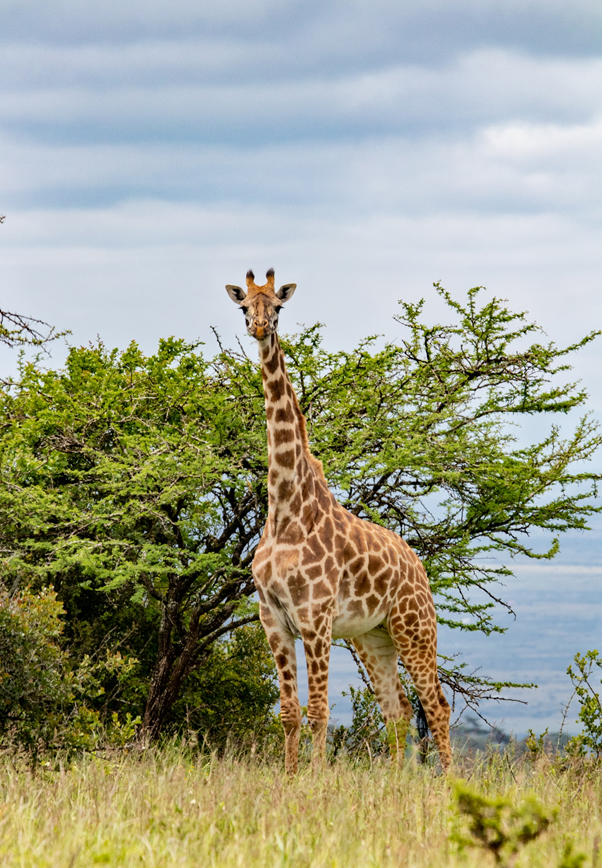 ILRI’s Kapiti Research Station is home to many wildlife species such as giraffes, zebras, gazelles, and including predators such as hyenas, lions, cheetahs and leopards. Since 2020, Kapiti Research Station is an official conservancy, acting as a wildlife corridor between Nairobi National Park and the Amboseli/Tsavo ecosystems. Photo credit: ILRI/Sonja Leitner.
ILRI’s Kapiti Research Station is home to many wildlife species such as giraffes, zebras, gazelles, and including predators such as hyenas, lions, cheetahs and leopards. Since 2020, Kapiti Research Station is an official conservancy, acting as a wildlife corridor between Nairobi National Park and the Amboseli/Tsavo ecosystems. Photo credit: ILRI/Sonja Leitner.
This blog was created and is maintained with the financial support of the European Union. Its contents are the sole responsibility of Sonja Leitner/ILRI and do not necessarily reflect the views of the European Union.






